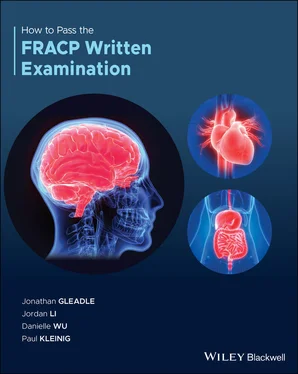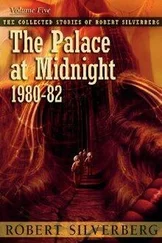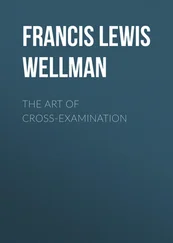
Yasuda S, Kaikita K, Akao M, Ako J, Matoba T, Nakamura M et al. Antithrombotic Therapy for Atrial Fibrillation with Stable Coronary Disease. New England Journal of Medicine. 2019;381(12):1103–1113. https://www.nejm.org/doi/full/10.1056/NEJMoa1904143
7. Answer: D
The anti‐anginal action of β‐blockers is predominantly through reduced heart rate, which results in a relative decrease in myocardial oxygen demand. This leads to decrease in angina symptoms. β‐blockade also results in decreased heart contractility, decreased atrioventricular conduction and nodal refractiveness, and competitive catecholamine inhibition to prevent cardiac remodelling.
Angina results from myocardial ischemia, due to a mismatch between myocardial oxygen demand and supply. Heart rate is the major determinant of oxygen consumption, and increased heart rate precedes most episodes of angina. Other determinants of myocardial oxygen demand include BP, myocardial wall tension, cardiac hypertrophy, and myocardial contractility. Coronary blood flow is the major determinant of myocardial oxygen supply, which is dependent on the pressure gradient across the coronary circuit, integrity of the coronary arteries, and oxygen carrying capacity of the blood. Typically, angina results from exercise or emotional stress precipitating further reduced coronary blood flow in patients with obstructive coronary artery disease (CAD). In a minority of patients, angina is secondary to functional alterations of coronary vessels, where coronary arteries can be angiographically normal, so called non‐obstructive CAD.
Treatment for stable angina includes lifestyle changes such as weight loss, exercise, smoking cessation, aspirin, moderate to high intensity statin therapy, and antianginal therapy as listed below. Heart rate should be targeted <70/min and BP <120/85 mmHg, with β‐blockers, calcium channel blockers, and/or nitrates, before considering newer agents.
1 Medications which reduce heart rate (reduce myocardial demand): β‐blockers, ivabradine, non‐dihydropyridine calcium antagonists.
2 Medications which induce coronary and vascular artery relaxation (increase myocardial supply): Dihydropyridine calcium channel blockers, nitrates, and nicorandil.
3 Medications which induce cellular tolerance to ischemia: Piperazine derivatives including trimetazidine, ranolazine.

Ohman E. Chronic Stable Angina. New England Journal of Medicine. 2016;374(12):1167–1176. https://www.nejm.org/doi/full/10.1056/NEJMcp1502240
8. Answer: C
Brugada syndrome (BS) is a rare inherited disease with ECG findings of coved type ST‐segment elevation (≥ 2mm) followed by a negative T wave in (≥ 1) the right precordial leads in V1 to V3 in patients with a structurally normal heart in patients with Type I BS.
ECG of Type II BS: The ST segments also have a high take‐off but the J amplitude of ≥ 2mV gives rise to a gradually descending ST elevation remaining ≥ 1mV above the baseline followed by a positive or biphasic T wave that results in a saddle back configuration. Type III BS ECG: Right precordial ST elevation of saddle‐back type or coved type.
BS is genetically transmitted as an autosomal dominant syndrome with incomplete penetrance and has a male predominance. Mutations of several genes have been reported to be linked to BS, with mutations of SCN5A gene the most common.
Presenting clinical symptoms include syncope, seizures, agonal breathing at night due to polymorphic ventricular tachycardia (PVTs), ventricular fibrillation and sudden cardiac death (SCD). Lethal arrhythmias are mainly observed during the night or at rest during the day suggesting a likely association with bradycardia or vagal events. Clinical manifestations are also noted in patients with fever, which requires prompt management with antipyretics to minimise the risks of arrhythmias.
The mainstay of management currently is to prevent SCD associated with arrhythmias with an implantable cardioverter defibrillator (ICD). More recently, radiofrequency epicardial catheter ablation has been suggested as to be a new therapeutic option for patients with BS.

Larkin D. Brugada Syndrome • LITFL • ECG Library Diagnosis [Internet]. Life in the Fast Lane • LITFL • Medical Blog. 2019 [cited 8 September 2019]. Available from: https://litfl.com/brugada‐syndrome‐ecg‐library/

Brugada J, Campuzano O, Arbelo E, Sarquella‐Brugada G, Brugada R.et al. Present Status of Brugada Syndrome. Journal of the American College of Cardiology [Internet]. 2018 [cited 16 November 2020];72(9):1046–1059. Available from: https://www.sciencedirect.com/science/article/pii/S0735109718353622?via%3Dihub
9. Answer: A
This presentation is highly suspicious for cardiac amyloidosis (CA). His echocardiogram suggests cardiac involvement especially left ventricular hypertrophy in the context of hypotension and low voltage ECG, which could be further investigated with cardiac MRI.
Amyloidosis is a collection of diseases in which a protein‐based infiltrate deposits in tissues as beta‐pleated sheets. In >95% of CA, the main protein being deposited is light chain [termed light chain amyloidosis (AL)] and less commonly transthyretin [termed transthyretin amyloidosis (ATTR)].
AL is a plasma cell dyscrasia, where misfolded antibody light chain fragments can deposit systemically in any organ. The typical presentation is heart failure with preserved ejection fraction, with pathognomonic but infrequent presentations with macroglossia and/or periorbital purpura, and other symptoms dependent on organ involvement, commonly kidneys (proteinuria, especially nephrotic range) gastrointestinal tract (diarrhoea, weight loss), and nervous system (peripheral neuropathy, carpal tunnel syndrome, orthostatic hypotension). AL presents in adults, with a median age of diagnosis of 63, and median untreated survival of 6 months if the initial presentation is heart failure. It is rare for patients to have clinical involvement of all of these organ systems. The diagnosis is often delayed. Physician should have a heightened clinical suspicion for amyloidosis in appropriate clinical context and should consider it until proven otherwise.
ATTR is due to monomerization and misfolding of the protein transthyretin, which is produced by the liver and functions as a transporter of thyroxine and retinol. There are two main subtypes of ATTR amyloidosis: (i) acquired wild type ATTR (ATTRwt, previously senile CA) which typically presents as heart failure or hypertrophic restrictive cardiomyopathy in a male >60, often preceded by carpal tunnel syndrome and/or spinal stenosis, and (ii) hereditary mutant variant (ATTRm) which can be due to >100 point mutations, and subsequently presents heterogeneously as polyneuropathy, cardiomyopathy, or mixed. ATTR prognosis is better than AL, with median survival of 4 years for ATTRwt and variable for ATTRm.
Echocardiogram is the first step in the CA diagnostic workup to identify patients likely to have the disease and prompting further workup. Typical features of CA on echocardiogram include:
Читать дальше
















